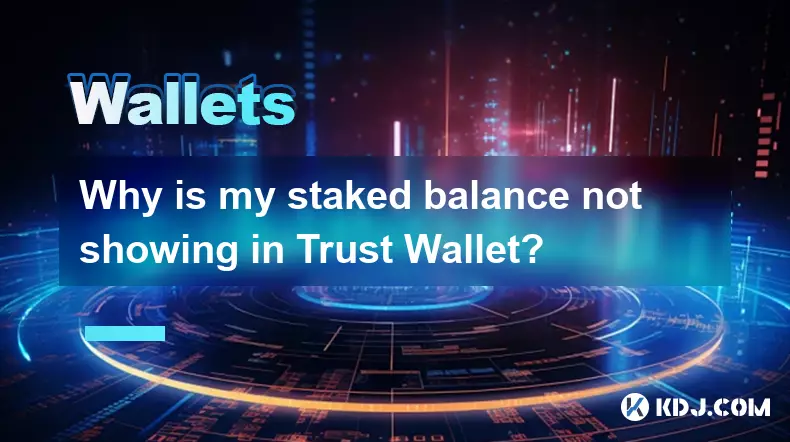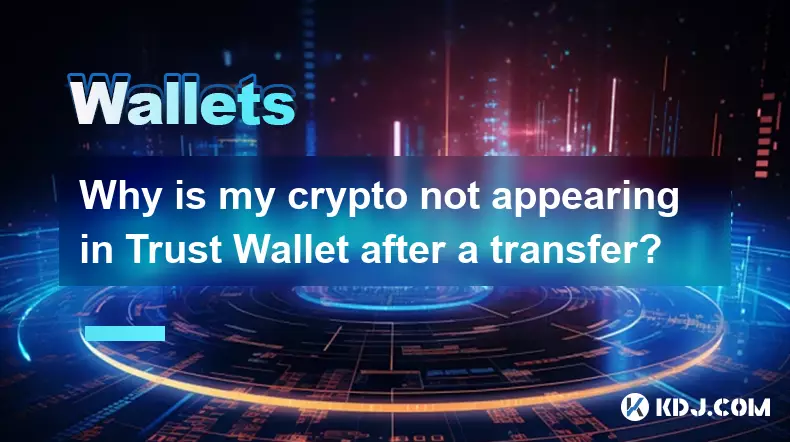-
 bitcoin
bitcoin $114320.977035 USD
-0.40% -
 ethereum
ethereum $4152.439985 USD
-1.75% -
 tether
tether $1.000111 USD
-0.04% -
 xrp
xrp $2.843037 USD
-1.63% -
 bnb
bnb $1013.349380 USD
-1.62% -
 solana
solana $208.362767 USD
-2.10% -
 usd-coin
usd-coin $0.999783 USD
0.00% -
 dogecoin
dogecoin $0.232559 USD
-1.00% -
 tron
tron $0.333491 USD
-1.09% -
 cardano
cardano $0.806310 USD
0.19% -
 hyperliquid
hyperliquid $45.023720 USD
-1.59% -
 ethena-usde
ethena-usde $1.000819 USD
-0.06% -
 chainlink
chainlink $21.241249 USD
-2.11% -
 avalanche
avalanche $30.035416 USD
-0.66% -
 stellar
stellar $0.364984 USD
-2.05%
How can I verify the correctness of a Ledger transaction address?
Always verify the recipient address on your Ledger device’s screen matches the intended one exactly—malware can alter addresses on your computer.
Sep 29, 2025 at 10:00 pm

Understanding Ledger Transaction Address Verification
1. Ensuring the accuracy of a Ledger transaction address is crucial for maintaining the security and integrity of cryptocurrency transfers. Users must adopt precise methods to confirm that the destination address matches their intent before authorizing any transaction.
2. The Ledger hardware wallet provides multiple layers of verification, primarily through its secure element and the interaction between the device’s screen and companion software like Ledger Live. This separation prevents malware from altering transaction details without user knowledge.
3. When initiating a transfer, always verify that the recipient address displayed on the Ledger device's physical screen exactly matches the intended address. This step is essential because malicious software could display a different address on your computer while sending funds elsewhere.
4. It is recommended to copy the recipient address directly from a trusted source—such as an official exchange withdrawal page or a verified contact—and manually compare it with what appears on the Ledger screen during confirmation.
5. Avoid relying solely on clipboard functions or QR codes unless you are certain they haven’t been tampered with by third-party applications running in the background.
Steps to Confirm Address Integrity During Transactions
1. Open Ledger Live and begin the process of sending cryptocurrency to a specified address. Enter all necessary details including amount and network fee.
2. After entering the recipient address, review it thoroughly within the Ledger Live interface. Make sure there are no unusual characters or deviations from standard address formats—for example, Ethereum addresses should start with “0x” and be 42 characters long.
3. Once submitted in the app, the transaction request will be sent to the connected Ledger device. At this point, the device will display the full recipient address across its screen, often requiring multiple button presses to scroll through the entire string.
4. Carefully compare each segment of the address shown on the Ledger screen against the one entered in Ledger Live. Even a single character mismatch indicates potential compromise and warrants immediate cancellation of the transaction.
5. Only after confirming complete alignment between both addresses should you press both buttons on the Ledger device to approve and broadcast the transaction to the blockchain network.
Best Practices for Secure Address Management
1. Regularly update your Ledger firmware through the official Manager in Ledger Live to ensure protection against known vulnerabilities that might affect address handling.
2. Use only official apps downloaded via Ledger Manager for managing cryptocurrencies. Third-party apps may not follow strict security protocols and could expose address data to risks.
3. Enable two-factor authentication (2FA) on associated services such as exchanges or custodial platforms where withdrawal addresses are registered. This adds another layer of defense against unauthorized changes.
4. Maintain a whitelist of frequently used addresses if supported by your wallet configuration. Some advanced settings allow pre-approval of destinations, reducing the risk of accidental misdirection.
5. Consider using domain-based address resolution systems like ENS (Ethereum Name Service), which allow human-readable names (e.g., “alice.eth”) instead of raw hexadecimal strings. These can reduce input errors and simplify verification when properly configured on compatible devices.
Frequently Asked Questions
What should I do if the address on my Ledger screen doesn’t match the one in Ledger Live?Immediately cancel the transaction. A discrepancy indicates possible interference from malware or a configuration error. Disconnect the device, scan your computer for threats, and retry only after ensuring system integrity.
Can I trust QR codes for entering transaction addresses on Ledger?QR codes can be reliable if generated and scanned in a secure environment. However, attackers can replace legitimate QR codes with malicious ones. Always cross-check the decoded address on the Ledger screen before approval.
Why does my Ledger require me to scroll through parts of the address?Due to limited screen size, full cryptocurrency addresses cannot be displayed at once. Scrolling ensures users actively verify each portion, minimizing blind confirmations that could lead to fund loss.
Is it safe to reuse old transaction addresses with Ledger?Reusing addresses does not inherently compromise Ledger’s security but reduces privacy. Each transaction is publicly recorded on the blockchain, making it easier to link activities to a single entity when addresses are reused.
Disclaimer:info@kdj.com
The information provided is not trading advice. kdj.com does not assume any responsibility for any investments made based on the information provided in this article. Cryptocurrencies are highly volatile and it is highly recommended that you invest with caution after thorough research!
If you believe that the content used on this website infringes your copyright, please contact us immediately (info@kdj.com) and we will delete it promptly.
- BlockDAG, DOGE, HYPE Sponsorship: Crypto Trends Shaping 2025
- 2025-10-01 00:25:13
- Deutsche Börse and Circle: A StableCoin Adoption Powerhouse in Europe
- 2025-10-01 00:25:13
- BlockDAG's Presale Buzz: Is It the Crypto to Watch in October 2025?
- 2025-10-01 00:30:13
- Bitcoin, Crypto, and IQ: When Genius Meets Digital Gold?
- 2025-10-01 00:30:13
- Stablecoins, American Innovation, and Wallet Tokens: The Next Frontier
- 2025-10-01 00:35:12
- NBU, Coins, and Crypto in Ukraine: A New Yorker's Take
- 2025-10-01 00:45:14
Related knowledge

How to get the Trust Wallet browser extension?
Oct 01,2025 at 12:37am
How to Access the Trust Wallet Browser Extension1. Visit the official Trust Wallet website through a secure internet connection. Navigate to the downl...

Why is my staked balance not showing in Trust Wallet?
Oct 01,2025 at 12:54am
Understanding Decentralized Exchanges in the Crypto Ecosystem1. Decentralized exchanges (DEXs) operate without a central authority, allowing users to ...

How to revoke smart contract access in Trust Wallet?
Oct 01,2025 at 12:54pm
Understanding Smart Contract Access in Trust Wallet1. Smart contracts are self-executing agreements built on blockchain networks, commonly used in dec...

Why is the Trust Wallet DApp browser not working?
Oct 01,2025 at 05:36am
Common Causes of Trust Wallet DApp Browser Issues1. The DApp browser within Trust Wallet may fail to load due to connectivity problems. A weak or unst...

Why is my crypto not appearing in Trust Wallet after a transfer?
Oct 01,2025 at 04:36am
Common Reasons Your Crypto Doesn’t Appear in Trust Wallet1. The transaction is still pending on the blockchain. Blockchain confirmations can take time...

How to import a wallet into Trust Wallet using a private key?
Oct 01,2025 at 09:54am
Understanding Wallet Import via Private Key in Trust Wallet1. Trust Wallet allows users to import existing cryptocurrency wallets using a private key,...

How to get the Trust Wallet browser extension?
Oct 01,2025 at 12:37am
How to Access the Trust Wallet Browser Extension1. Visit the official Trust Wallet website through a secure internet connection. Navigate to the downl...

Why is my staked balance not showing in Trust Wallet?
Oct 01,2025 at 12:54am
Understanding Decentralized Exchanges in the Crypto Ecosystem1. Decentralized exchanges (DEXs) operate without a central authority, allowing users to ...

How to revoke smart contract access in Trust Wallet?
Oct 01,2025 at 12:54pm
Understanding Smart Contract Access in Trust Wallet1. Smart contracts are self-executing agreements built on blockchain networks, commonly used in dec...

Why is the Trust Wallet DApp browser not working?
Oct 01,2025 at 05:36am
Common Causes of Trust Wallet DApp Browser Issues1. The DApp browser within Trust Wallet may fail to load due to connectivity problems. A weak or unst...

Why is my crypto not appearing in Trust Wallet after a transfer?
Oct 01,2025 at 04:36am
Common Reasons Your Crypto Doesn’t Appear in Trust Wallet1. The transaction is still pending on the blockchain. Blockchain confirmations can take time...

How to import a wallet into Trust Wallet using a private key?
Oct 01,2025 at 09:54am
Understanding Wallet Import via Private Key in Trust Wallet1. Trust Wallet allows users to import existing cryptocurrency wallets using a private key,...
See all articles










































































